Significance of the myxovirus resistance A (MxA) gene -123C>a single-nucleotide polymorphism in suppressed interferon beta induction of severe acute respiratory syndrome coronavirus infection
- PMID: 20462354
- PMCID: PMC7109798
- DOI: 10.1086/652799
Significance of the myxovirus resistance A (MxA) gene -123C>a single-nucleotide polymorphism in suppressed interferon beta induction of severe acute respiratory syndrome coronavirus infection
Abstract
Myxovirus resistance A (MxA) is an antiviral protein induced by interferon alpha and beta (IFN-alpha, IFN-beta) that can inhibit viral replication. The minor alleles of the -88G>T and -123C>A MxA promoter single-nucleotide polymorphisms (SNPs) are associated with increased promoter activity and altered response to IFN-alpha and IFN-beta treatment. Here, we demonstrate that the -123A minor allele provided stronger binding affinity to nuclear proteins extracted from IFN-beta-untreated cells than did the wild-type allele, whereas the -88T allele showed preferential binding after IFN-beta stimulation. Endogenous IFN-alpha and IFN-beta induction can be suppressed in severe acute respiratory syndrome (SARS) coronavirus infection. In support of our in vitro findings, a large case-control genetic-association study for SARS coronavirus infection confirmed that the -123A minor-allele carriers were significantly associated with lower risk of SARS coronavirus infection, whereas the -88T minor-allele carriers were insignificant after adjustment for confounding effects. This suggests that -123C>A plays a more important role in modulating basal MxA expression, thus contributing more significantly to innate immune response against viral infections that suppress endogenous IFN-alpha and IFN-beta induction such as SARS coronavirus.
Conflict of interest statement
Potential conflicts of interest: none reported.
Figures
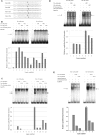
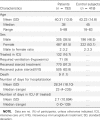
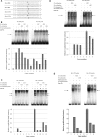
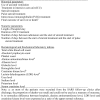




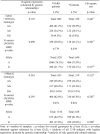


Similar articles
-
[Association between single nucleotide polymorphisms in -88 and -123 loci of MxA gene promoter region and HCV susceptibility and IFN-α efficacy].Xi Bao Yu Fen Zi Mian Yi Xue Za Zhi. 2012 Dec;28(12):1307-10. Xi Bao Yu Fen Zi Mian Yi Xue Za Zhi. 2012. PMID: 23232524 Chinese.
-
Functional MxA promoter polymorphism associated with subacute sclerosing panencephalitis.Neurology. 2004 Feb 10;62(3):457-60. doi: 10.1212/01.wnl.0000106940.95749.8e. Neurology. 2004. PMID: 14872030
-
Differential transcriptional expresión of the polymorphic myxovirus resistance protein A in response to interferon-alpha treatment.Pharmacogenetics. 2004 Mar;14(3):189-93. doi: 10.1097/00008571-200403000-00007. Pharmacogenetics. 2004. PMID: 15167707 Clinical Trial.
-
[Alpha interferon, antiviral proteins and their value in clinical medicine].Ann Biol Clin (Paris). 1999 Nov-Dec;57(6):659-66. Ann Biol Clin (Paris). 1999. PMID: 10572214 Review. French.
-
Recent updates of interferon-derived myxovirus resistance protein A as a biomarker for acute viral infection.Eur J Med Res. 2024 Dec 23;29(1):612. doi: 10.1186/s40001-024-02221-8. Eur J Med Res. 2024. PMID: 39710743 Free PMC article. Review.
Cited by
-
The COVID-19 Host Genetics Initiative, a global initiative to elucidate the role of host genetic factors in susceptibility and severity of the SARS-CoV-2 virus pandemic.Eur J Hum Genet. 2020 Jun;28(6):715-718. doi: 10.1038/s41431-020-0636-6. Epub 2020 May 13. Eur J Hum Genet. 2020. PMID: 32404885 Free PMC article. No abstract available.
-
Genomics in Patient Care and Workforce Decisions in High-Level Isolation Units: A Survey of Healthcare Workers.Health Secur. 2021 May-Jun;19(3):318-326. doi: 10.1089/hs.2020.0182. Epub 2021 Apr 6. Health Secur. 2021. PMID: 33826422 Free PMC article.
-
Initial whole-genome sequencing and analysis of the host genetic contribution to COVID-19 severity and susceptibility.Cell Discov. 2020 Nov 10;6(1):83. doi: 10.1038/s41421-020-00231-4. Cell Discov. 2020. PMID: 33298875 Free PMC article.
-
Genetic polymorphisms as multi-biomarkers in severe acute respiratory syndrome (SARS) by coronavirus infection: A systematic review of candidate gene association studies.Infect Genet Evol. 2021 Sep;93:104846. doi: 10.1016/j.meegid.2021.104846. Epub 2021 Apr 30. Infect Genet Evol. 2021. PMID: 33933633 Free PMC article.
-
Identification of Aggravation-Predicting Gene Polymorphisms in Coronavirus Disease 2019 Patients Using a Candidate Gene Approach Associated With Multiple Phase Pathogenesis: A Study in a Japanese City of 1 Million People.Crit Care Explor. 2021 Nov 5;3(11):e0576. doi: 10.1097/CCE.0000000000000576. eCollection 2021 Nov. Crit Care Explor. 2021. PMID: 34765983 Free PMC article.
References
-
- World Health Organization [10 May 2010];Summary table of SARS cases by country, 1 November 2002 to 7 August 2003. http://www.who.int/csr/sars/country/2003_08_15/en/index.html.
-
- Peiris JS, Yuen KY, Osterhaus AD, Stohr K. The severe acute respiratory syndrome. N Engl J Med. 2003;349:2431–2441. - PubMed
Publication types
MeSH terms
Substances
LinkOut - more resources
Full Text Sources
Miscellaneous

